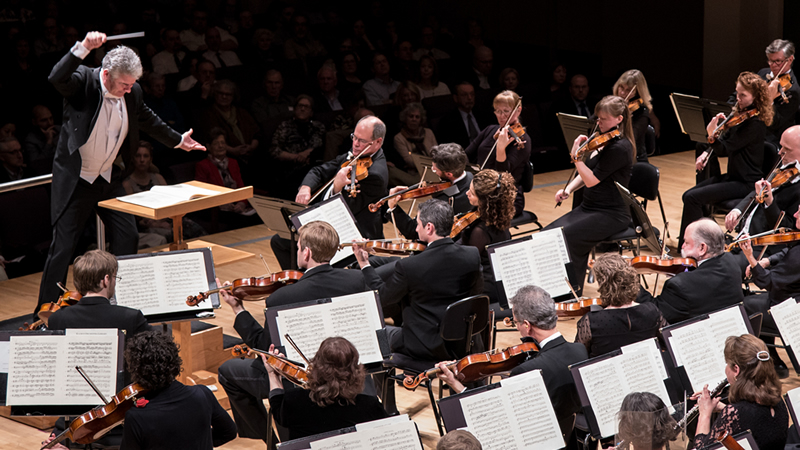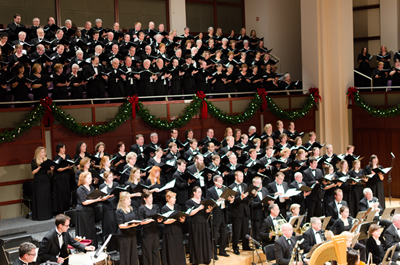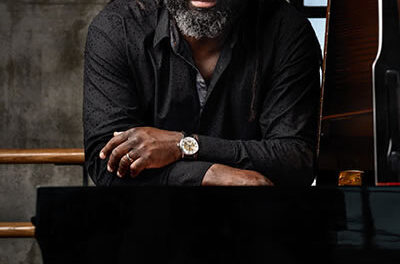The North Carolina Symphony with Grant Llewellyn as its music director, has been programming a variety of imaginative repertoire. Works by exciting younger composers have figured with regularity in the symphony’s concerts. In this program, the symphony tried something else inventive. Together with the University of North Carolina School of the Arts, the orchestra presented Shakespeare’s Romeo and Juliet. In this collaborative form, the performance was both a play and a concert, a hybrid which, according to the program notes, is “something different than either of them.”
This was a fruitful idea. The Symphony, North Carolina’s largest performing arts organization, came together with the state’s top conservatory. The play, performed by students at the UNCSA, was presented in costume and full staging, although sensibly with no sets and just a few props. The widely diverse music was by a dozen different composers with a variety of styles; it tellingly amplified the sentiment of the stage action. Often the music underlay the dialogue; in the opening scene it substituted for dialogue; at times it was silent, allowing the dialogue to speak for itself.
The idea is intriguing. The widely stylistic range allowed the music to react pliantly to the drama. A waltz by Berlioz accompanied the ball scene near the beginning. Repetitive music in a minimalist vein accompanied the confrontation between Juliet and her father, providing a ceaseless undertone of tension. The famous and wonderfully dramatic dance of the Montagues and Capulets by Prokofiev served as the entr’acte. Perhaps most memorably, Wagner’s powerful, passionate Liebestod accompanied the ending scene following the double suicide of the lovers.
Nonetheless, the reality of presentation didn’t succeed as well in practice as the appeal of the concept. The difficulty lay in the extended passages during which the orchestra played underneath the dialogue. The orchestra of fifty or more needed to stay consistently soft in order not to overbalance the actors. This meant that one could often not experience the performance of the music as such, since the dynamic range needed to be so constrained. And even with that, it was regularly not easy to discern the spoken words. Too often neither the music nor the drama was fully effective.
It should be mentioned that the printed program listed the composers alphabetically, without an indication as to where in the action the music was heard. It would have guided the listener much better if the music had been listed in order, including when pieces were used more than once.
A drawback to having this wonderful music for full orchestra beneath the drama, was that the actors had to use microphones. Perhaps it was partly due to the size of the Wilson Center. But without amplification, a good part of the speech would not have been heard. The voices sounded less natural however, and when from time to time the actors declaimed at their loudest, the tone quality distinctly suffered.
These difficulties were likely behind something which, having gone to many North Carolina Symphony concerts, this reviewer has never seen before: after intermission it was obvious that many people had left, with substantial rows of open seats where audience had been sitting earlier. This writer repeatedly heard people saying that they were having trouble hearing the words.
Nonetheless, those who left missed a strong ending. It was acted by Friar Lawrence (Chris Holtkamp) with feverish urgency, a quality which characterized his performance overall; and by the prince (Bailey Lee) with a nobility of purpose as the blood feud was finally brought to an end. The surging waves of Wagner’s music needed to be considerably restrained in order for the dialogue to be heard, but it combined with the drama to produce a powerful peroration.
The overall performance of the play by the cast of fifteen was well-done. Shakespeare’s immortal words are ever fresh. Juliet (Cricket Brown) stood out for passionate presentation of her role. Romeo (Ben Weinswig) worked up considerable dramatic momentum at times, but compared with his female lead often seemed relatively dispassionate. The balcony scene – played very nicely with a ladder – had humor along with the desperation of first love, and Juliet’s speech ending that scene was poignant. Mercutio’s pratfalls (Siena Werber) were funny, though they could have been still bawdier.
One characteristic which occurred with some regularity was a relatively fast pace of speech. At times the speeches were too quick to be fully nuanced. This may have been due to the intricacies of timing the script to coincide with the music. That the actors and orchestra did their rehearsing in different cities before coming together may have added to the challenge.
This combination of music and drama is promising and has considerable strengths. If the equally considerable challenges can be mastered, this “new art form,” as Llewellyn describes it, could open expanded possibilities for the stage. As it stands, this is still a project in development. But in the hands of musicians and actors of this caliber, its potential can be fully explored.













